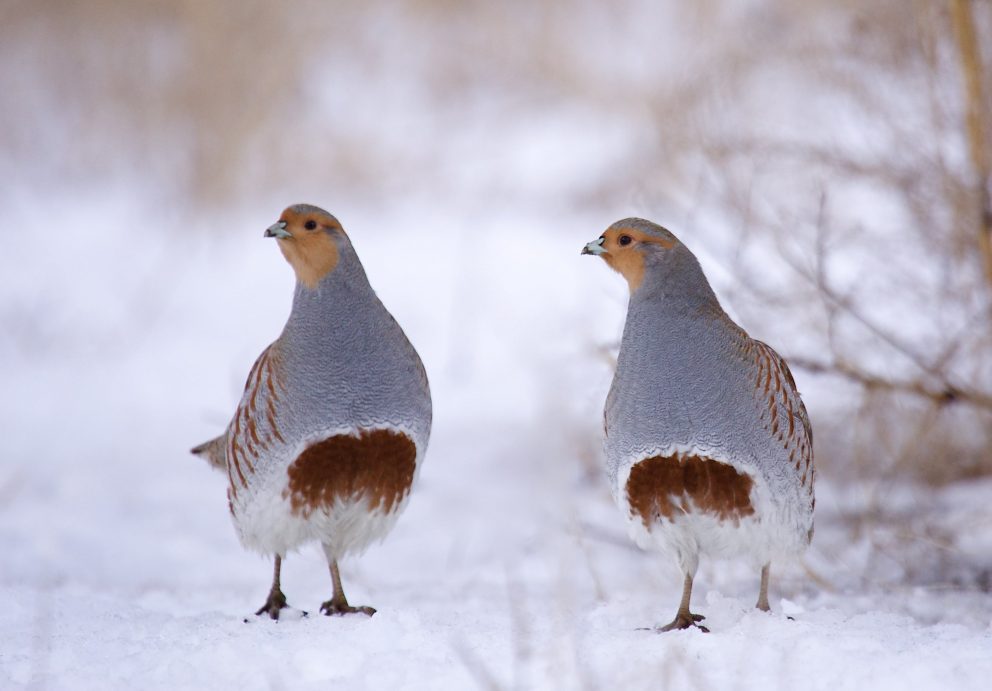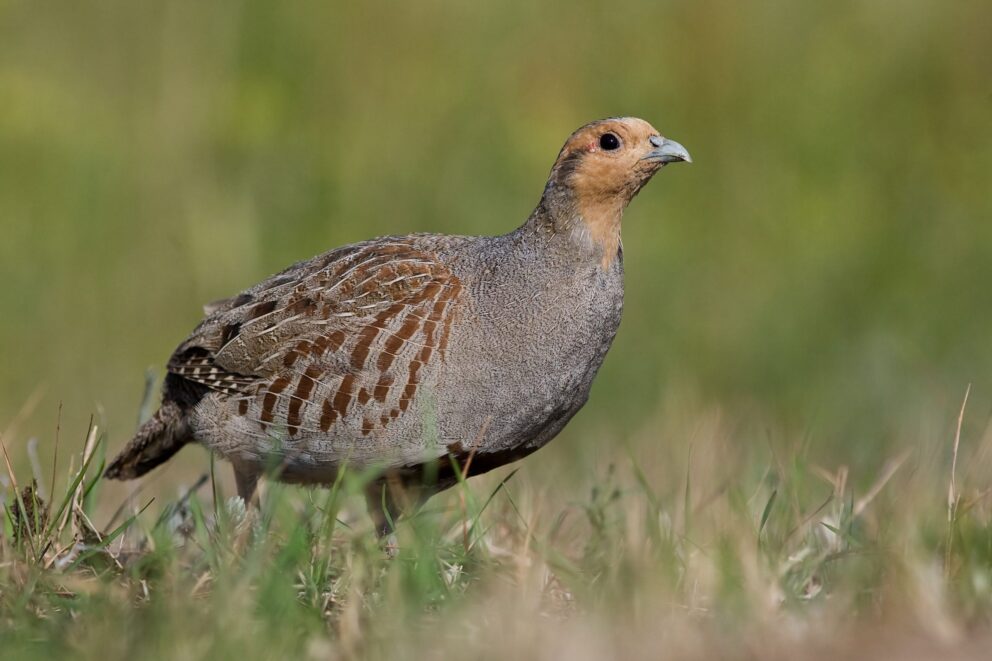- SCIENTIFIC NAME
- Perdix perdix
- CLASSIFICATION
- Bird
- LIFE SPAN
- 1-4 Years
- SIZE
- 11.8-13” | 0.85-1.1lbs
- STATE CONSERVATION STATUS
-
- State Protected
- FEDERAL CONSERVATION STATUS
- Least Concern
- GAME STATUS
- Game
- GAME TYPE
- Upland Game
- Washoe
- Humboldt
- Pershing
- Churchill
- Mineral
- Lyon
- Douglas
- Carson City
- Storey
- Elko
- Lander
- Eureka
- White Pine
- Esmeralda
- Nye
- Lincoln
- Clark
Habitat & Range
Hungarian Partridges can be found in agricultural lands as well as grassland habitats throughout the year.
- Agricultural Lands
- Grasslands
Threats
- Disease
- Habitat Loss
Natural History
Hungarian Partridges are monogamous and become more territorial during the breeding season. Females nest in the ground, where they will lay 10-22 eggs. They are ground foragers, consuming seeds and greens they pick from the ground, along with the occasional insect. They usually feed at dawn and dusk, spending the remainder of the day resting.
Fun Facts
Hungarian Partridges prefer running over flying, often only taking flight when flushed. When they do fly, it is usually for a short period downhill. They were introduced to the U.S. in the early 1900s.














